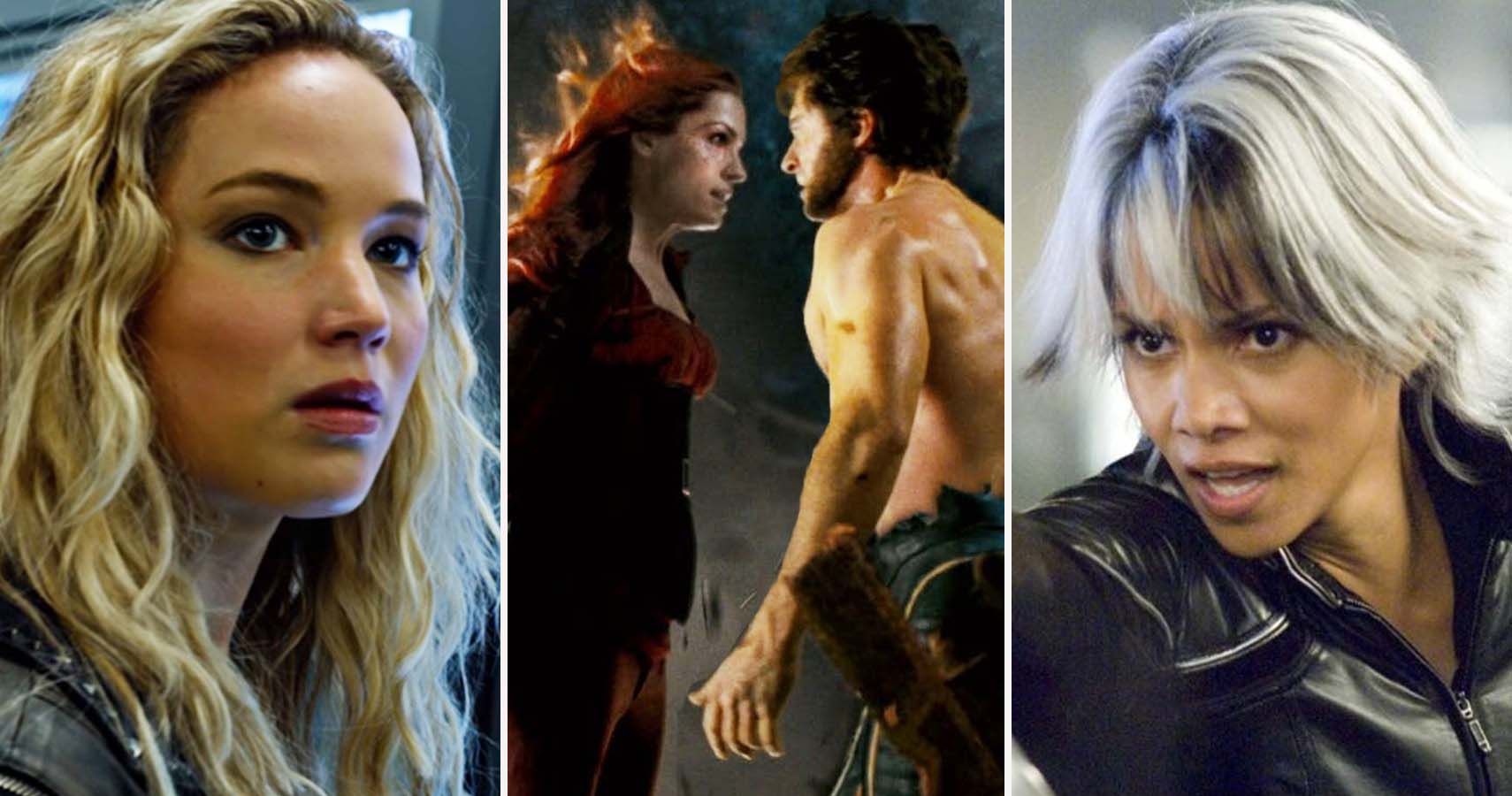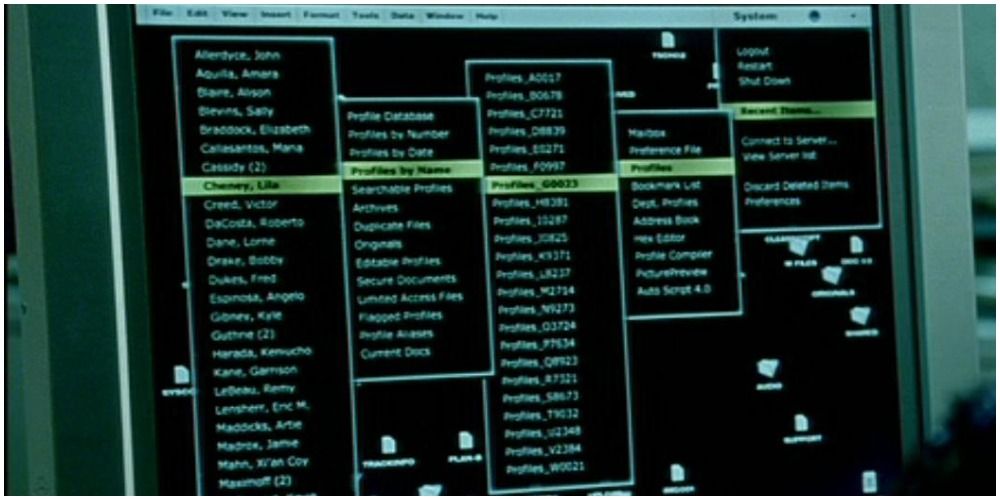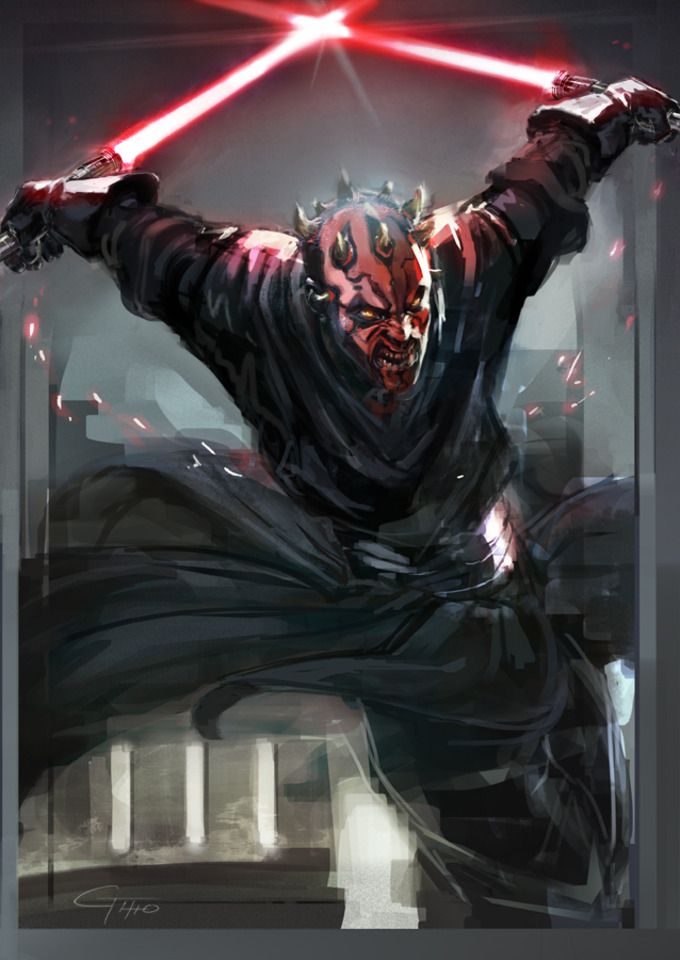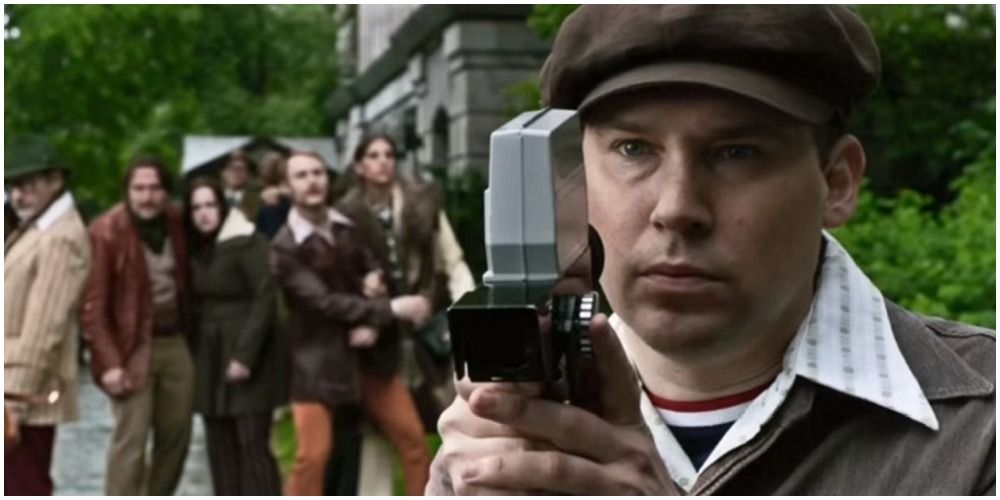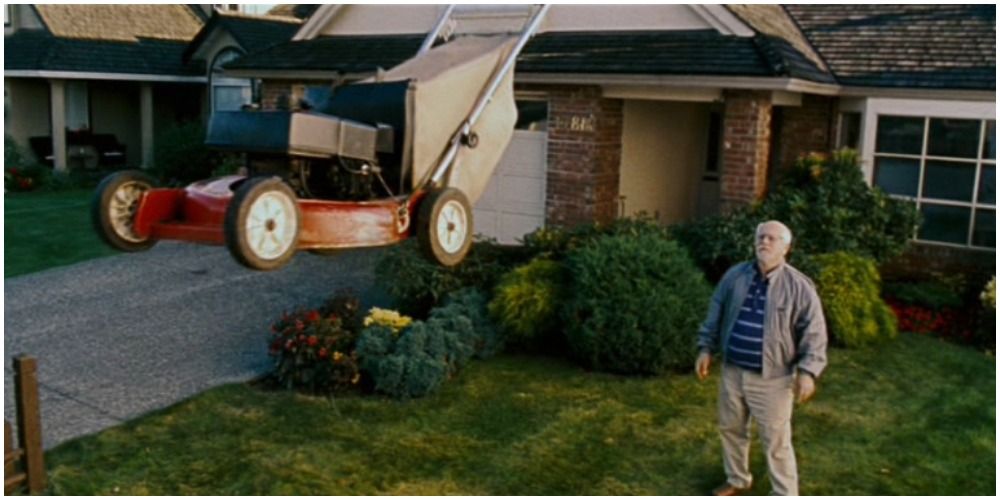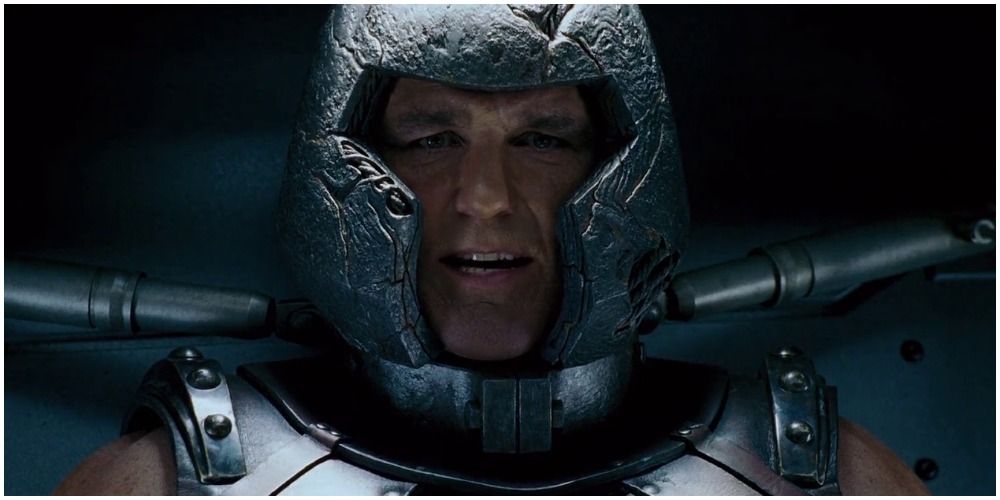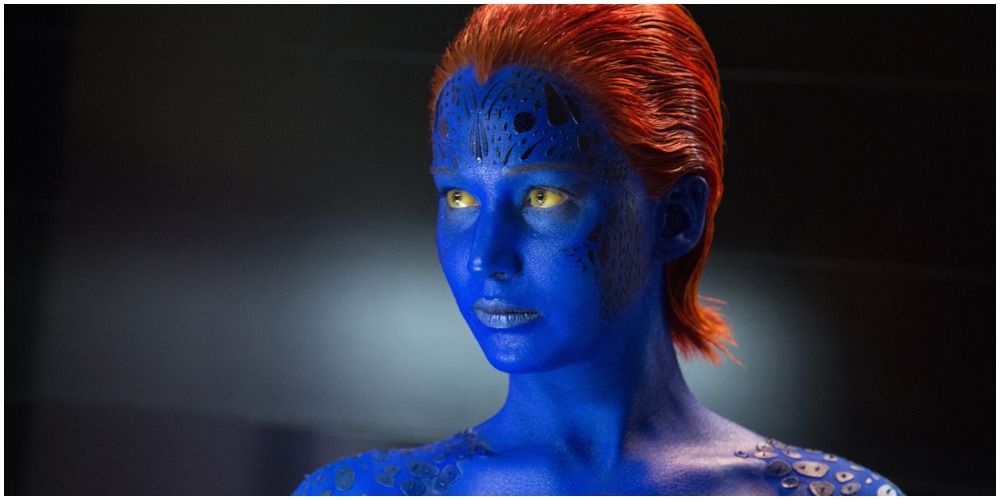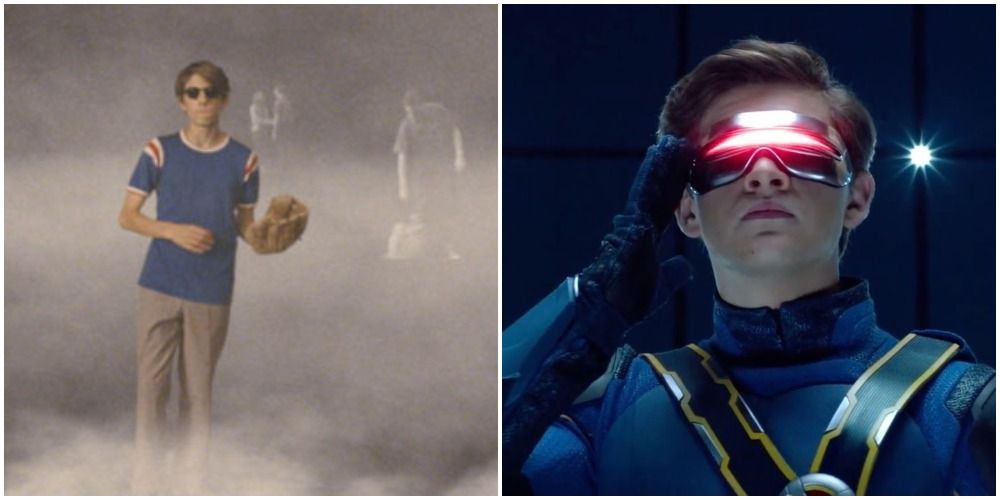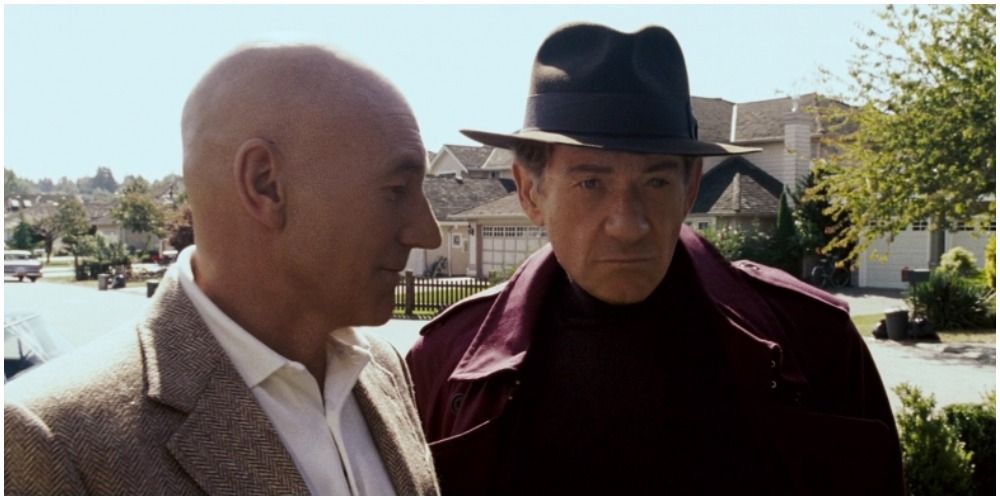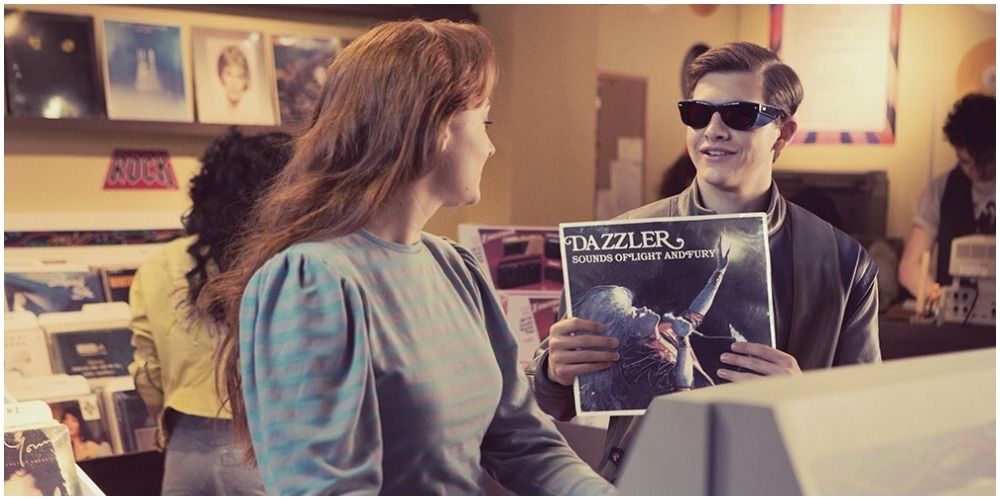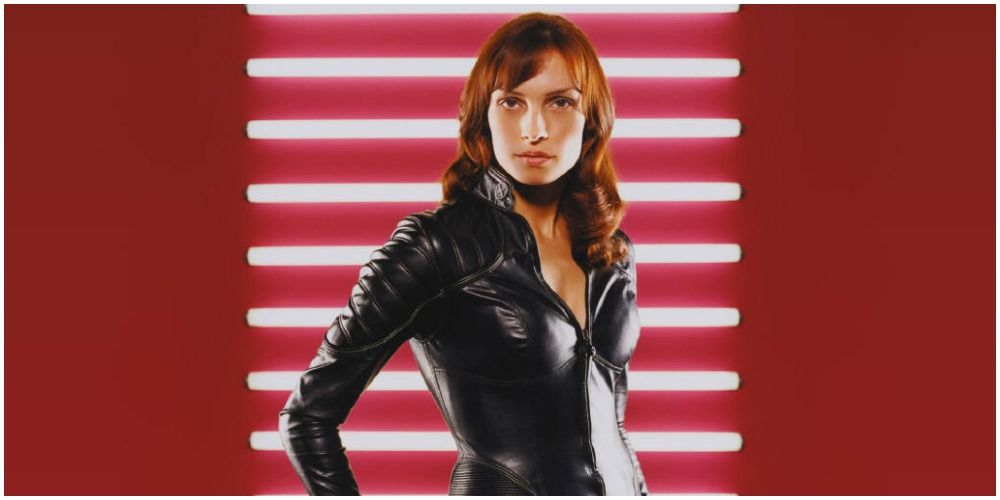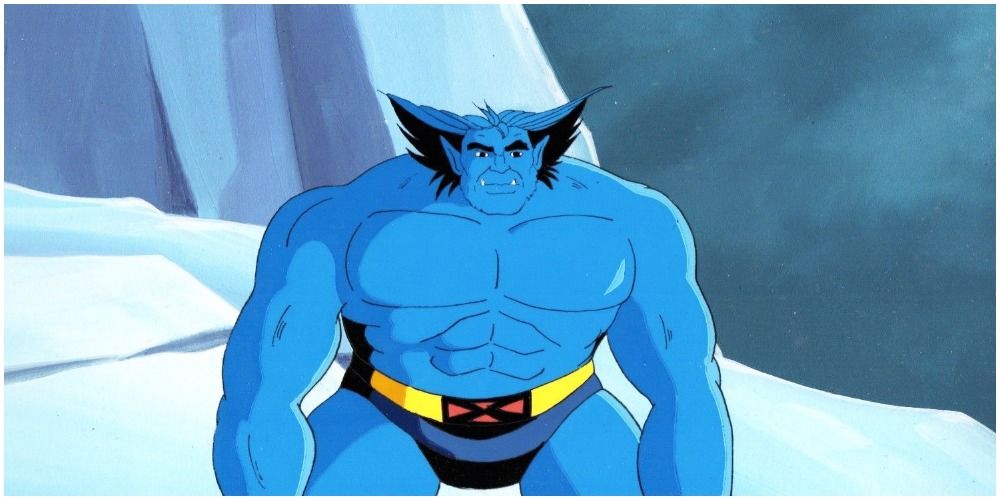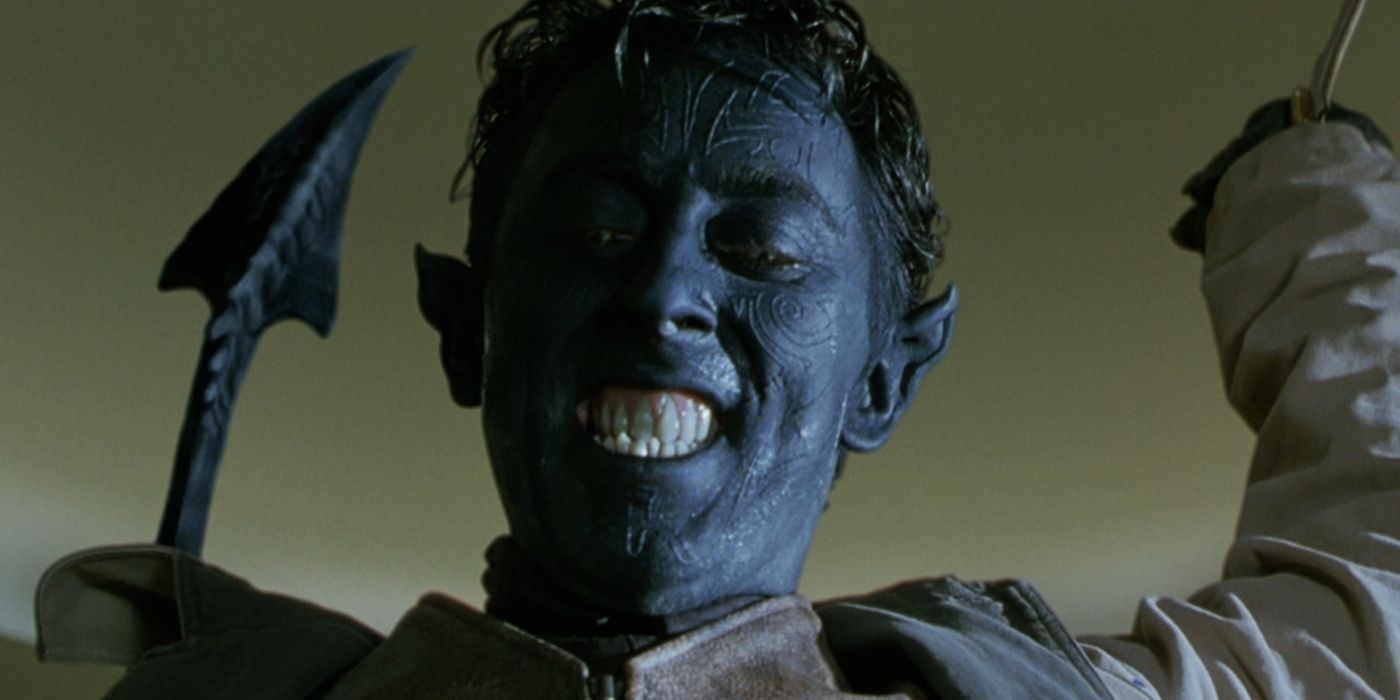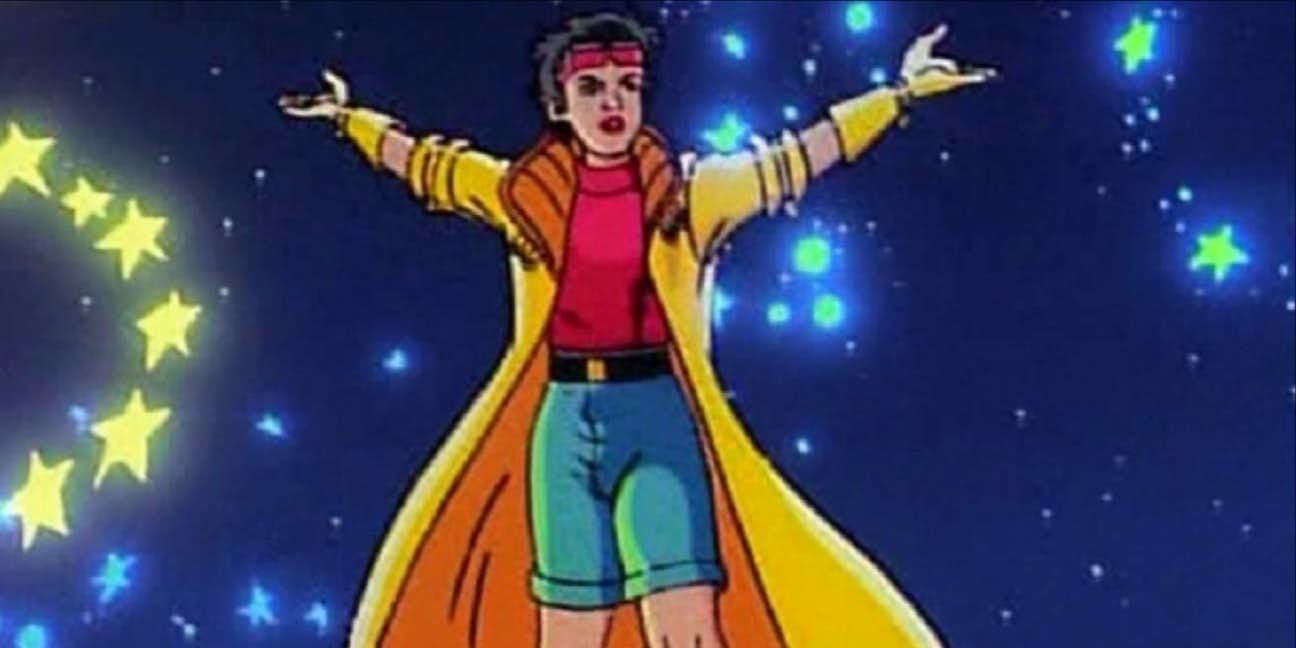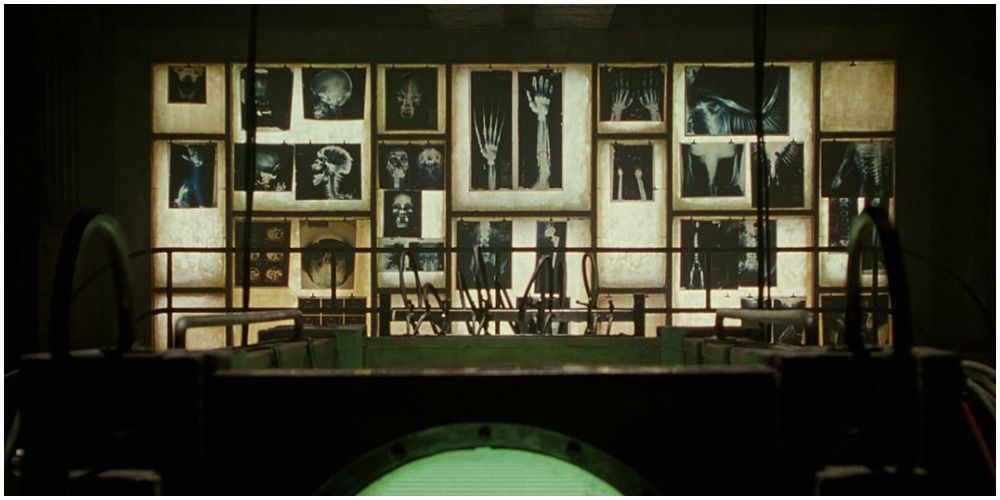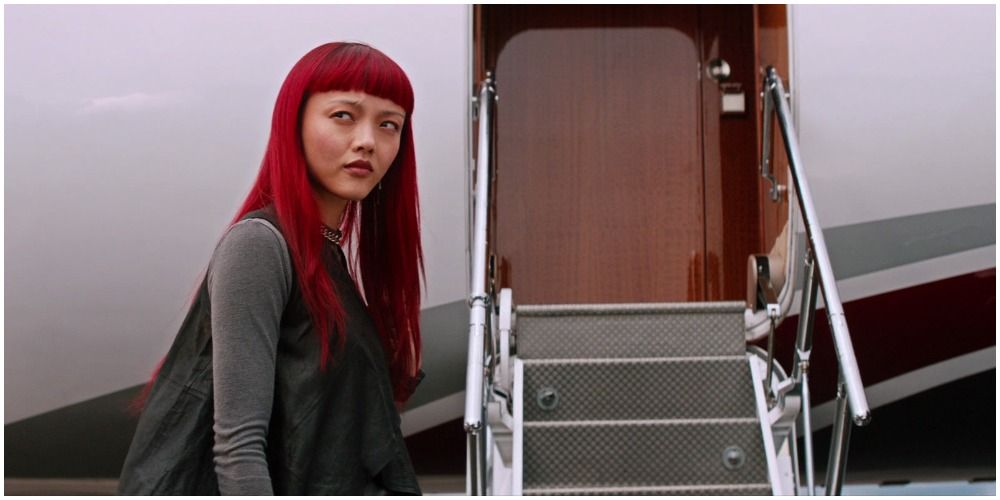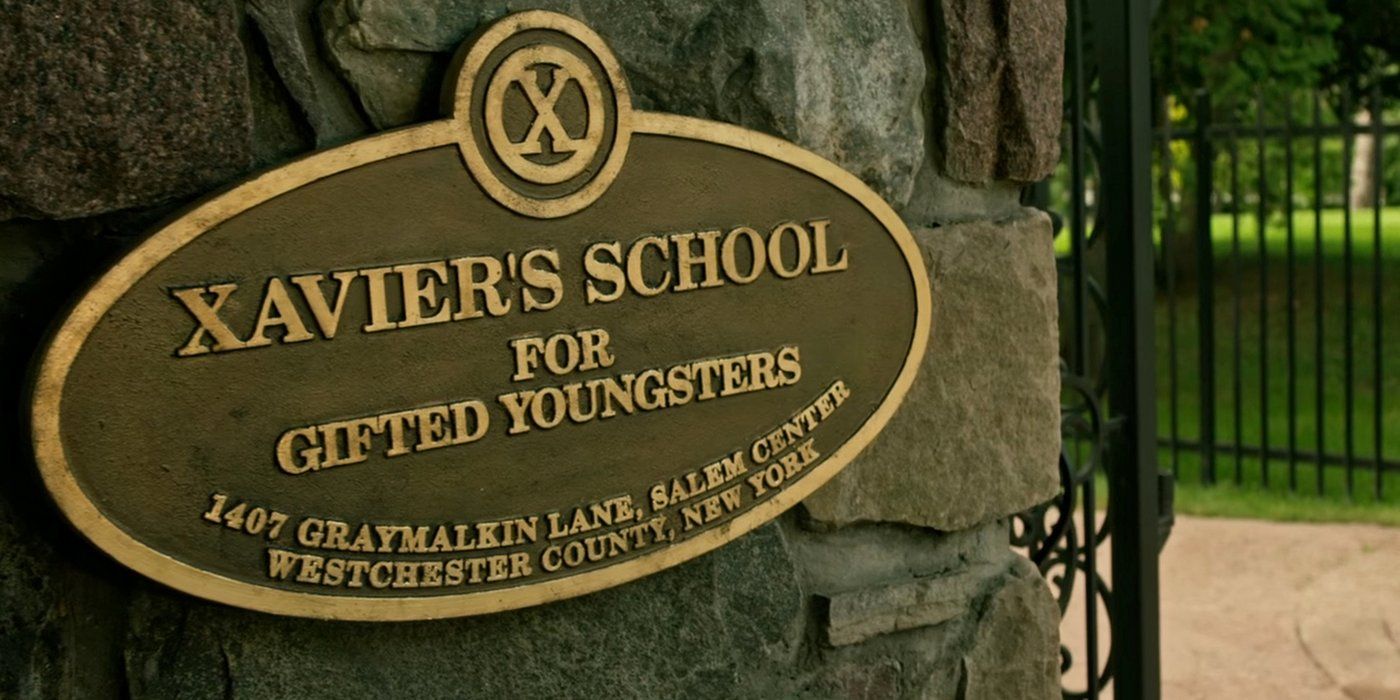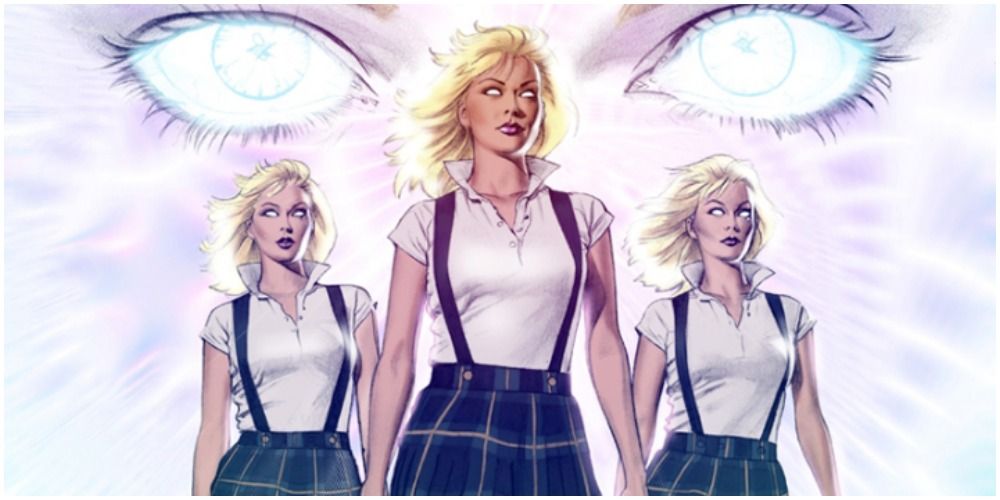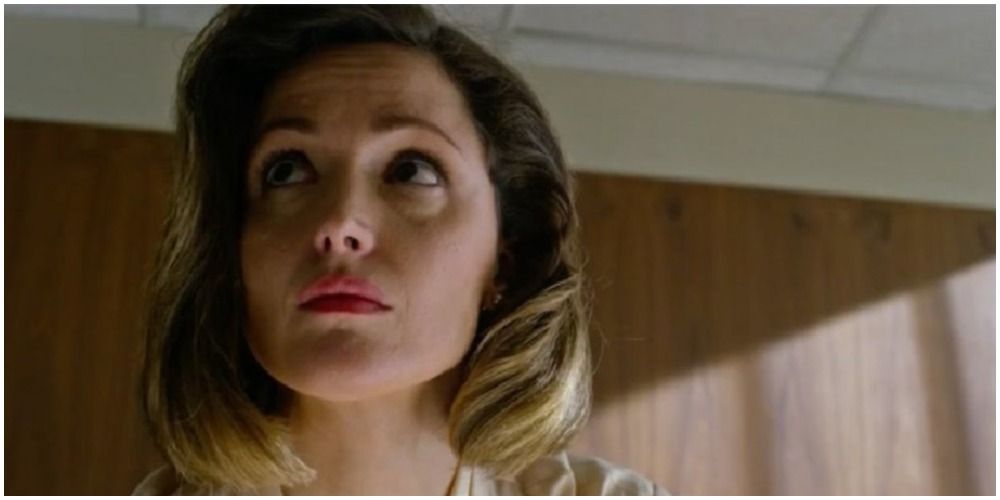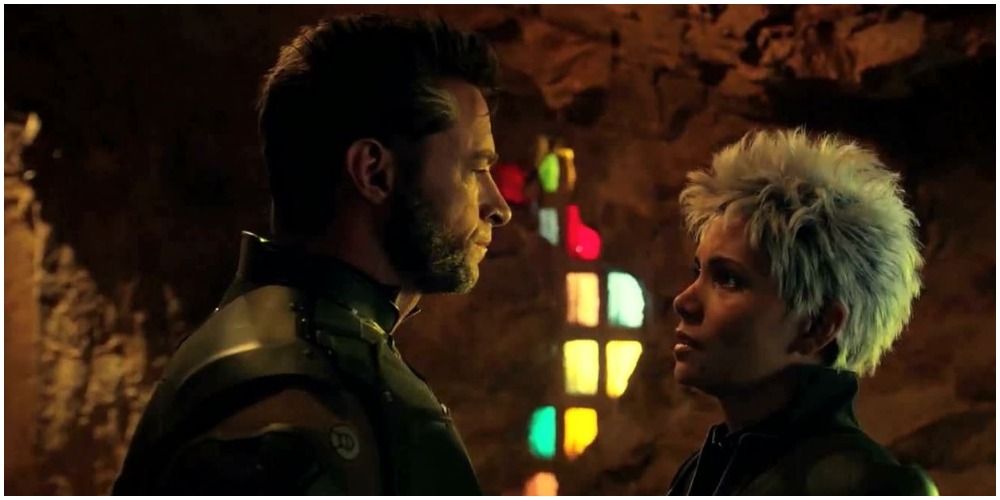The first X-Men movie was considered to be something of a risk at the box office, despite the fact that it was an adaptation of one of the most successful comic book franchises in the world. This was due to the fact that the overwhelmingly negative reception to Batman & Robin was believed to have ruined the superhero movie genre for good. The X-Men movies turned out to be a huge success and led to the creation of several prominent spinoff movies that starred Wolverine and Deadpool.
One of the issues that fans have with the X-Men movies is that they often promised stuff via hints and foreshadowing that they never followed up on. There were numerous subtle cameos and references to other characters from the comic books that would never make an appearance.
The Marvel Cinematic Universe is a well-oiled machine that plans events out years in advance, which means that references are usually intentional. The X-Men franchise has lacked that same level of planning, with the movies being made without much thought going into what will come next. The X-Men films contain numerous hidden easter eggs and references for the sharp-eyed fans to find. There are also some secrets buried within the behind-the-scenes information and the lore of the films that offer insight into what might have been.
We are here today to look at the secrets of the X-Men movies, from the computer that was loaded with cameos, to the lost love between Storm and Wolverine.
Here are Twenty Secrets About The X-Men Movies Even Fans Completely Missed!
20 Stryker's Cameo Computer
William Stryker is one of the most dedicated anti-mutant advocates in the X-Men franchise. He is a thorn in the side of the X-Men in several movies, despite the fact that he lacks any kind of superpower.
In X2: X-Men United, Mystique uses her shapeshifting power to perform a covert ops mission that gave her access to Willaim Stryker's computer. She did this in order to find the hidden location of Magneto, who had been imprisoned after the events of the first movie.
William Stryker's computer lists numerous different characters from the X-Men comic books, many of which have yet to actually appear in the films. These include the likes of Amara Aquila (Magma), Black Tom Cassidy, Lila Cheney, Paige Guthrie (Husk), Wanda Maximoff (Scarlet Witch), Kevin McTaggart (Proteus), Everett Thomas (Synch), Calvin Rankin (Mimic), Angelo Espinosa (Skin), Dr. Karl Lykos (Sauron), and Franklin Richards, who is the son of Reed & Sue Richards from the Fantastic Four.
There are also references to different superhero teams and organizations that have yet to appear, such as Alpha Flight, Beta Flight, Gamma Flight, and Department H. These are references to several Canadian groups that have been closely associated with the X-Men over the years. Alpha Flight, in particular, is meant to be Canada's equivalent to the Avengers.
19 The Darth Maul Reference
The villains of the first X-Men movie were intended to be the Brotherhood of Mutants. This is also the name of Magneto's team of villains in the X-Men comic books, though his team was referred to as the Brotherhood of Evil Mutants.
The only member of the Brotherhood of Mutants who was also an original member of the Brotherhood of Evil Mutants was Toad. This was an odd choice, considering that Toad's powers weren't that impressive in the comic books, as he was just a guy with vaguely froglike abilities. The version of Toad that appeared in the first X-Men movie was portrayed as far more powerful than he is in the comics and was given some more combat focused abilities.
This version of the character was so popular that it replaced the original cowardly one in the comic books.
Toad was played by Ray Park, who is an incredible martial artist and stunt actor. Ray Park is best-known for playing Darth Maul in Star Wars: Episode I - The Phantom Menace. There is a scene in the first X-Men movie that gives a shoutout to Park's portrayal of Darth Maul, as he wields a metal bar during his fight with Storm and spins it around in a manner that is almost identical to one of Darth Maul's moves.
18 Directing The Security Guards
Bryan Singer is the director of several of the X-Men movies. He directed X-Men, X2: X-Men, X-Men: Days of Future Past, and X-Men: Apocalypse. Singer also acted as an executive producer on all of those projects.
Bryan Singer has made cameos in several of the movies that he has directed. He has also managed to cameo in movies that he is not associated with, such as when he played a Starfleet Officer in Star Trek: Nemesis, a gig he likely got due to his friendship with Patrick Stewart.
Bryan Singer has had several cameos in the X-Men movies that he directed. These have included playing one of the security guards of Magneto's plastic prison cell and was one of the members of the security team who was sent to deal with Wolverine in X-Men: Apocalypse, which led to Wolverine cutting him down with his claws. Singer has joked that he now adds the fact that he was carved up by Wolverine to his resume.
There was even a brief Bryan Cameo in X-Men: Days of Future Past where he didn't play a security guard for once. He played a cameraman who was filming when the first public display of mutant powers was happening.
17 Overshadowed By Stan Lee
Stan Lee has made cameos in almost every Marvel movie ever made. This makes sense, considering he co-created many of the characters that have appeared in the films. There have been a few instances where other creators have also had cameos in the Marvel movies, such as when Rob Liefeld appeared in Deadpool as a mercenary.
Chris Claremont might be the most important X-Men writer of all time, save for maybe Stan Lee himself (who created the team) as Claremont's iteration of the X-Men was helped propel the team to stardom. It was under Claremont's watch that the X-Men comic books became the biggest Marvel property.
This was something that went unchallenged until the creation of the Marvel Cinematic Universe.
Chris Claremont was only given a single cameo in the X-Men movies to date. He appeared during the intro of X-Men: The Last Stand as one of the neighbors of Jean Grey. Claremont plays the man who watches as his lawnmower flies away due to the power of Jean Grey's telekinesis. Stan Lee also has a cameo in this scene as a man who watches as his garden hose moves on its own.
16 He's A Bad Internet Reference
X-Men: The Last Stand is one of the most hated movies based on a Marvel property. It seemed hellbent on ruining all of the goodwill that had been earned by the previous two movies and went about offing main characters with the same zeal as Frieza from Dragon Ball Z.
One of the worst parts of X-Men: The Last Stand was turning Juggernaut into a cockney football player, who barely looked like the character from the comics. Juggernaut was turned from an unstoppable engine of destruction whose powers were fuelled by ancient magic, to just another mutant with super strength.
The most infamous scene in X-Men: The Last Stand involves the Juggernaut being merged into the ground by Kitty Pryde. He then tells her that he is the Juggernaut.
This scene was actually a reference to an old dub humor video, where a group of guys created their own dub of the X-Men animated series from the '90s. They created a comedy dub of the episode where Black Tom Cassidy and Juggernaut try to steal Lilandra. The fact that the writers decided to reference this painfully unfunny video shows just how much they cared about the X-Men movies.
15 Mystique Makes Chicken
Mystique's role in the story of the X-Men movies was greatly expanded after the release of X-Men: First Class. This was due to the fact that she was played by Jennifer Lawrence, who was propelled to stardom and became an A-list celebrity after First Class was released. Lawrence was contractually obliged to appear in several more X-Men movies, so the producers decided to make the most out of their newly minted star.
It helped that the next movie after First Class was Days of Future Past, as it was based on the comic book storyline that introduced Mystique. The comic version of Days of Future Past shows a world where Mystique ended Senator Robert Kelly, which led to sweeping anti-mutant reforms and the eventual takeover of America by the Sentinels.
Mystique was given a big role in X-Men: Days of Future Past, as the bleak future timeline was created when Mystique ended Boliver Trask.
Mystique first learns of Boliver Trask when she is saving some mutant soldiers who are serving in the Vietnam War. She was impersonating a soldier named Sanders, who is revealed by his insignia to be a Colonel. This is a reference to Colonel Sanders, who is the founder of Kentucky Fried Chicken.
14 Cyclops Never Ages
Wolverine was sent back in time in X-Men: Days of Future Past in order to prevent Mystique from ending Boliver Trask. This led to the creation of a new timeline, which the later movies followed. The idea of multiple timelines is about as X-Men as you can get and it helped to undo a lot of the less popular things from the franchise, such as X-Men Origins: Wolverine and also brought Cyclops & Jean Grey back to life.
The new timeline gave a chance for the filmmakers to show younger versions of the original members of the X-Men from the first movie. This was an idea that finally came to fruition in X-Men: Apocalypse.
It seems that the creators of X-Men: First Class had wanted to bring Cyclops in at an earlier point, as he is briefly seen when Professor Xavier uses Cerebro during the film. The problem with this cameo is that Cyclops would later appear as a teenager in Apocalypse, even though the version that appeared in First Class also appeared to be in his early teens. There is a twenty-year gap between First Class and Apocalypse, so this cameo doesn't make sense.
13 Magneto & Professor X Never Stop Aging
X-Men: First Class gave us a glimpse into the original iterations of the X-Men and the Brotherhood of Mutants, both of which consisted of almost entirely different memberships than the groups we saw in the first X-Men movie.
X-Men: First Class showed us the first meeting between Charles Xavier, Magneto, and Mystique, with the friendship and eventual falling out between the three forming the backbone of the film. It is through these divisions that the Brotherhood of Mutants and the X-Men were first formed.
The circumstances under which Charles Xavier first met Magneto were vastly different from how they were described in the first X-Men. According to Charles Xavier, he first met Magneto when he was seventeen.
The events of X-Men: First Class contradict this statement, as Charles Xavier was thirty-years-old when he first met Magneto.
To further confuse matters, the two of them appear to be much older when they first met Jean Grey in X-Men: The Last Stand, despite the two of them looking much healthier in Apocalypse, which happened after the intro sequence of The Last Stand. There is also no explanation given as to why the two of them are friendly after they had parted on such bad terms years earlier.
12 Dazzler's Record Deal
One of the most prominent members of the X-Men to still remain absent from the films is Dazzler. She has been an on and off member of the team since the '80s and has been associated with several other prominent superhero groups, such as A-Force, which was a female only spinoff of The Avengers.
Dazzler's real name is Alison Blaire. She possesses the mutant ability to turn sound into a physical construct, which includes lights and energy beams. This was due to the fact that she was intended to be a disco-themed superhero and was originally conceived as part of a cross-promotion with a singer who would portray the character in real-life. This plan fell through, which meant that Marvel was lumped with a disco-themed superhero for the rest of its days.
Dazzler will be appearing in the flesh in X-Men: Dark Phoenix, but she has already had a brief cameo in X-Men: Apocalypse. Cyclops shows one of Dazzler's vinyl records to Jean Grey when they are out shopping, which means that Dazzler is already a celebrity in the X-Men world, though this is something that may be ignored in the next film.
11 Storm's Accent Shift
Storm's backstory in the X-Men comics has remained pretty much consistent since her creation. She was the daughter of a Kenyan tribal princess and an American photographer. Her family moved to Cairo and her parents later perished during the Suez Crisis. After living as a pickpocket for years, she decided to travel the world, which led to her becoming worshiped as a goddess when her ability to control the weather first developed.
It seems that Storm was originally intended to share the background of her comic book counterpart in the X-Men movies, as Halle Berry attempted to affect an African accent in the first movie. A lot of fans might not realize that she is doing this, as the accent is terrible and she doesn't have that many lines in the first film.
Halle Berry decided to drop the accent for the later X-Men movies and decided to just use her regular speaking voice instead. This was probably for the best, as Halle Berry fought for a bigger role in the later movies, as she became the leader of the X-Men when Cyclops and Charles Xavier perished during the events of X-Men: The Last Stand.
10 Jean Grey Stole Beast's Skills
The original members of the X-Men that we saw in the first X-Men movie were composed of members from several different iterations of the team that existed in the comics. The fans had hoped to see the original five members of the team (Angel, Beast, Cyclops, Iceman, and Marvel Girl) alongside Wolverine, but only Cyclops and Marvel Girl were active members of the team. Angel and Beast wouldn't properly join the team until X-Men: The Last Stand, though Beast would cameo in his human form in the background shots of the earlier films.
Beast was originally planned to appear in the original X-Men movie, but his addition would have drastically increased the budget if they were going to use the more famous blue fur version of the character. It's for this reason that Jean Grey was changed in order to make her more like Beast.
In the first X-Men movie, Jean Grey is shown to be an incredibly gifted doctor and scientist, as well as being an advocate for mutant rights. These are traits that are normally associated with Beast in the comic books, yet they were given to Jean in order to help further certain elements of the plot.
9 The Secret Beast Cameo
The X-Men comic books of the '80s and '90s brought in record numbers of sales for Marvel, to the point where they had even eclipsed Spider-Man in popularity.
The reason that many people became fans of the X-Men in the '90s was thanks to the animated series of the same name. X-Men featured the current team from the comics at the time (known as the Blue and Gold era, due to the fact that the X-Men would often split into two groups) and the episodes were often highly-praised adaptations of the most popular storylines that had appeared in the comics.
The X-Men animated series had to tone down some of the darker story elements from the comic books, as it was intended to be a show for kids. This resulted in Jean Grey surviving the events of the Dark Phoenix Saga and Proteus being allowed to return to his original body, even though he was slain by Colossus in the comics.
The X-Men cartoon was even given a few shoutouts in the movies. One example of this involved a trucker during the scene where Wolverine first encounters Rogue. He was played by George Buza, who had previously voiced Beast in the X-Men animated series.
8 The Intricate Theme
The opening scene of X2: X-Men United might be the single best moment of the entire franchise. This is the scene where we see a mind-controlled Nightcrawler attempting to end the President of the United States of America. He does this with the aid of his teleporting powers, which allows for one of the most exciting and visually impressive scenes in the franchise.
Nightcrawler fails in his plan, as he is shot by a secret service agent while taking his sweet time lifting up a knife with his tail. It is later revealed that this was a plan orchestrated by William Stryker, who was using the pretext of the ending of the President to further his own anti-mutant agenda. This is similar to how the dark future of the Days of Future Past storyline was created in the X-Men comics.
If you look closely during the scene where Nightcrawler first enters the White House, you can see a lot of portraits lining the walls of the building. When Nightcrawler begins the mission, you can clearly see portraits of Abraham Lincoln, John F. Kennedy, and William McKinley on the walls. This is significant because these are the three Presidents who were ended while still in office.
7 Jubilee's New Job
Jubilee might be the most disrespected member of the X-Men when it comes to the movies. She has been repeatedly relegated to background cameos and deleted scenes, with only her iconic outfit to tell her apart from the other nameless mutants that attend Xavier's school. It's also suggested that Jubilee perished at the hands of the Sentinels in the original timeline, or by Charles Xavier when he lost control in Logan.
The lack of respect for Jubilee stems from the fact that she was one of the most annoying characters in the X-Men comic books and animated series. Jubilee was a mall rat who often clung to Wolverine and often needed rescuing from the bad guys. It didn't help that she had one of the lamest powers in the entire Marvel universe.
Jubilee might not receive any respect, but her voice actors have managed to avoid the stigma associated with the character.
Chiara Zanni voiced Jubilee in X-Men: Evolution, which was a cartoon series that followed the canon of the movies closer than it did in the comic books. Zanni was actually given a role in X2: X-Men United, as she played one of the tour guides in the White House. It's ironic that Jubilee's voice actor received more love from the movies than the actual character.
6 The Archangel Foreshadowing
Angel was one of the original members of the X-Men. He didn't make an appearance until X-Men: The Last Stand, which was likely due to concerns over being able to make his wings look realistic in the earlier films. These fears were well-founded, as the special effects used to make Angel's wings in The Last Stand were dreadful, though they were much better when he appeared in Apocalypse.
It seems that Angel's appearance in X-Men: The Last Stand was something that was planned during the development of X2, as one of the x-rays that Wolverine finds among the Weapon X files shows what appears to be a wing above someone's shoulder.
This was likely added in as foreshadowing to one of the plots from the X-Men comic books. Angel actually had his wings amputated after they were infected with gangrene. He was later given a new set of metallic wings that could fire razor-sharp arrows when he had his body modified by Apocalypse. It was at this point that Angel took on the name Archangel. Apocalypse turned Archangel into one of his Four Horsemen and the X-Men had to help undo the brainwashing and restore Angel's original personality.
The idea of Apocalypse transforming Angel into Archangel was used in X-Men: Apocalypse.
5 Yukio's Power Of Foreshadowing
The X-Men comic books have proven that it is very difficult for Wolverine to lose his life. He has suffered every injury imaginable, including surviving decapitation and being caught in a nuclear blast. It will take more than a mere megaton weapon to take down Logan, as his healing factor will always bring him back from the brink of destruction.
The movie version of Wolverine isn't quite so durable, as he finally perished when he was impaled by a tree branch.
It turns out that this scene was actually foreshadowed back in The Wolverine. This was due to a mutant named Yukio, who possessed the ability to see glimpses of the moment when someone loses their life.
When Yukio used her powers on Wolverine, she said that she saw him on his back with blood everywhere and that he was holding his own heart in his hands.
At the end of Logan, Wolverine is laying on his back after being impaled and is bleeding, while holding Laura's hand. Yukio's words referred to his "heart" being someone that he loved, rather than the one in his chest. It seems that Yukio has the mutant power of metaphor, rather than actually seeing the moment when someone loses their life.
4 Lex Luthor & Charles Xavier Own A Timeshare
It's common for movies and TV shows to reuse the same locations for shooting. There are even some places that exist for the sole purpose of making movies, as they are so picturesque that their owners know that studios will pay good money to have them in the background of shots.
The X-Men movies were no stranger to hiring specific outdoor locations for their movies, as Hatley Castle was used to represent Xavier's Academy throughout the series. This is a stately manor that was built over a century ago in British Columbia, which is now considered to be a National Historic Site in Canada.
Hatley Castle was also considered to be the location where the Royal Family of the United Kingdom were going to retreat to during World War II if the Germans had been able to invade England by land.
The incredible decor of the manor has led to Hatley Castle being used in numerous productions, such as The Dead Zone and The Changeling.
Hatley Castle was also used to represent Luthor Mansion in Smallville, which was the residence owned by Lex Luthor. The manor has also been used to represent Queen Mansion in Arrow.
3 The Background Cuckoos
It's possible for siblings to share mutant abilities in the world of the X-Men, though this often means that their powers won't work on each other, as was the case with Cyclops and Havok. It's also possible for one sibling to be a mutant while all of their brothers and sisters would be normal.
The Stepford Cuckoos were an example of quintuplets who shared a mutant ability, as they possessed power psionic abilities and the ability to share thoughts with each other. This power was stronger when the sisters were physically close to each other. Two of the Stepford Cuckoos have since perished, which means that the remaining three have to share their powers with each other.
The Stepford Cuckoos were only given a brief cameo in the X-Men movies and you really had to keep an eye out in order to see them. They could be seen in the background of the shot during the sequence where Storm and Wolverine are talking while walking through Xavier's Academy.
The Stepford Cuckoos would later appear in The Gifted, where they were all played by Skyler Samuels. They were also all played by a single actress in Wolverine and the X-Men, where they were all voiced by Tara Strong.
2 Never Ask A Scottish Woman Her Age
Moira MacTaggert is one of the most important allies of the X-Men in the comic books. She is an incredibly gifted scientist who has helped numerous mutants learn how to use their powers. Moira has also been an on again off again love interest for Charles Xavier, which was something that was really played up in X-Men: Apocalypse, especially as it was clearly an attempt to downplay the obvious romantic overtones that had been suggested with Xavier and Magneto in the previous films.
Moira MacTaggert was given a brief cameo in X-Men: The Last Stand, where she turned out to be the carer of Professor Xavier's twin brother, whom he later possesses when his physical body is destroyed by the Phoenix.
She was shown to be in her late thirties/early forties in X-Men: The Last Stand. This was later contradicted by the fact that Moria played a huge role in X-Men: First Class, where she appeared to be in her late twenties/early thirties. This means that she should have been in her sixties or seventies in The Last Stand.
1 Storm <3 Wolverine
One of the benefits of showing alternate timelines in a story is that you can finally resolve storylines without having them affect the long-term continuity of the series. This means that beloved characters can fall in love and be offed by their enemies without the risk of ruining the show.
The X-Men comic books have made good use of these alternate timelines, as was the case with the Age of Apocalypse and Days of Future Past storylines.
The X-Men animated series showed an alternate future where mutants were at war with humanity, which resulted in battles between the X-Men and the Avengers.
This storyline showed Wolverine and Storm in a relationship. They would later travel back in time in order to stop their horrible future from occurring, even though they knew it would cost them their love.
X-Men: Days of Future Past also attempted this storyline, though it was kept in a brief moment that was later relegated to the deleted scenes of the movie. Logan kisses Storm during an extended sequence where they discuss their upcoming plans. They share a passionate kiss, as Wolverine is about to go back in time and undo the events leading to the ending of Boliver Trask, which means that their love will never exist.

